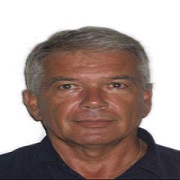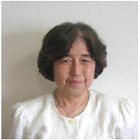Day 2 :
Keynote Forum
Xudong Huang
Harvard Medical School, USA
Keynote: Developing nanoparticle-based molecular imaging probe for Alzheimer’s diseaserelated enzymes
Time : 08:40-09:20

Biography:
Abstract:
Keynote Forum
Xudong Huang
Harvard Medical School, USA
Keynote: Developing nanoparticle-based molecular imaging probe for Alzheimer’s diseaserelated enzymes
Time : 08:40-09:20

Biography:
Abstract:
Keynote Forum
Dae Joon Kung
Sungkyunkwan University, South Korea
Keynote: Development of universal transfer technique for chemical vapor deposited 2-dimensional films
Time : 09:20-10:00

Biography:
Abstract:
Keynote Forum
Istvan Toth
University of Queensland, Australia
Keynote: Nanotechnology based delivery systems for vaccines
Time : 10:00-10:40

Biography:
Abstract:
Keynote Forum
May Alrashed
King Saud University, Saudi Arabia
Keynote: The antibacterial effect of green and chemically synthesized silver nanoparticles on extended spectrum β- lactamase (ESBL) and carbapenemases producing enterobacteriaceae (CPE)
Time : 11:00-11:40

Biography:
Abstract:
Keynote Forum
Bonex Wakufwa Mwakikunga
DST/CSIR National Centre for Nano-Structured Materials, South Africa
Keynote: A computerized breath analyser device based on a micro-nano-chip of VO2 nanoparticles for personal pain-free determination of blood glucose levels in a type 1 diabetes mellitus patient
Time : 11:40-12:20

Biography:
Abstract:
Keynote Forum
Jyh-Ping Chen
Chang Gung University, Taiwan
Keynote: Composite electrospun aligned PLGA/curcumin/heparin nanofibrous membranes for wound dressing application
Time : 12:20-13:00

Biography:
Abstract:
Keynote Forum
Toyoko Imae
National Taiwan University of Science and Technology, Taiwan
Keynote: Nanocomposites for encyclopedia of bioanalytical methods for bioavailability and bioequivalence studies of pharmaceuticals
Time : 13:50-14:30

Biography:
Abstract:
- Nanoscale materials | Sustainable (or) Green Nanotechnology | Nanofabrication | Nanocomposites| Smart nanotechnology | Toxicology of Nanoparticles |Research and Development of Nano Medicine | Polymer Nanoparticles and Nanomedicine | NanoParticles and Nanomedicine
Location: Las Vegas, USA

Chair
Xudong Huang
Harvard Medical School, USA

Co-Chair
Toyoko Imae
National Taiwan University of Science and Technology, Taiwan Session Introduction
Session Introduction
Nicky Thomas
University of South Australia, Australia
Title: A Trojan Horse strategy for the delivery of biologicals
Time : 14:15-14:40

Biography:
Abstract:
Muhammad Yasir Ali,
Philipps University Marburg, Germany
Title: Aptamer conjugated nanoparticles as carrier for targeted anticancerous drug
Time : 14:40-15:05

Biography:
Abstract:
Arend Laurence Mapanawang
Yayasan Medika Mandiri Foundation, Indonesia
Title: Chemical bonding characters of love herbal medicine
Time : 15:05-15:30

Biography:
Abstract:
Imran Tariq
Philipps University of Marburg, Germany
Title: Enhanced gene delivery by lipid triblock nanocarriers
Time : 15:30-15:55

Biography:
Abstract:
Hendry Izaac Elim
Pattimura University, Indonesia
Title: Electronics physical system of large antioxidant structure in herbal medicine based zingiberaceae fruit: Understanding and application
Time : 16:15-16:40

Biography:
Abstract:
Fatemeh Mir Najafi Zadeh
University of New South Wales, Australia
Title: Synthesis of low toxic quantum dots for bioapplications
Time : 16:40-17:05
Biography:
Abstract:
Imran Tariq
Philipps University of Marburg, Germany
